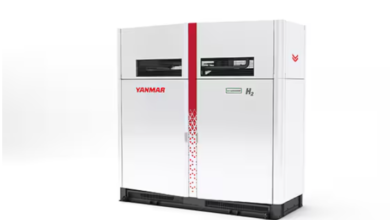dynaCERT and Cipher Neutron Catapult to establish R&D Facility in the Toronto

dynaCERT Inc. is pleased to announce that is has concluded a Collaboration Agreement with Cipher Neutron Inc. to further jointly develop, produce and market state-of-the-art Hydrogen technology, including AEM Electrolyser technology, that is designed to produce Green Hydrogen for world-wide large infrastructure projects, and Reversible Fuel Cell technology applied to emergency preparedness and efficient storage of Hydrogen as a long-term source of power.
Cipher Neutron is a rapidly growing disruptive technology company focused on Electrolysers for Green Hydrogen production and Reversible Fuel Cells for power generation and energy storage solutions. Cipher Neutron combines a global group of collaborating scientists that team up with engineers, technology developers, experts in hydrogen technology, investment bankers and people that have worked in hydrogen and power generation for decades. Cipher Neutron’s innovative products, such as Electrolysers and Reversible Fuel Cells under development, have unique advantages over other Hydrogen production, power generation and energy storage solutions currently available in the global market.
In collaboration with dynaCERT, CN plans to expand the development of dynaCERT’s previously announced Anion Exchange Membrane (AEM) Electrolysers with a goal to expand dynaCERT’s collaborative Research & Development and to accomplish the following:
AEM is considered as a superior hybrid solution combining the benefits of both PEM electrolysers and Alkaline electrolysers. The major issue with PEM technology is the high cost owing to the use of precious metals such as Platinum and Iridium as catalysts. AEM does not require such precious metals making it more sustainable and cost effective than PEM electrolysers. The major drawback in Alkaline electrolysis is its low current density and highly corrosive alkaline solution used as the electrolyte. The AEM technology offers higher current density using significantly reduced amounts of corrosive electrolytes compared with alkaline electrolysers.
Green Hydrogen is defined as hydrogen that is produced from water electrolysis using clean electric power (i.e. electric power from hydro, solar, nuclear & wind), resulting in a zero GHG footprint. Grey Hydrogen, by comparison may often have a significant GHG footprint, as such hydrogen is produced by the steam methane reforming process.
One of the major hurdles of Green Hydrogen is its high production cost. CN and dynaCERT technology is designed to address this major industry problem. A typical commercially available electrolyser consumes more than 51 kilowatt-hours (“kWh”) of energy to produce one (1) kilogram of Hydrogen or 77% efficiency (based on High Heating Value calculations of H2 Gas). Cipher Neutron’s and dynaCERT’s jointly developed 5 Kilowatt AEM Electrolyser slashes the energy consumption down to 48 kWh, thereby achieving 82% efficiency.
Our highly efficient AEM Electrolyser can produce more Hydrogen per kWh than typical commercially available electrolysers and enables Green Hydrogen at affordable prices. For example, if clean electric power were available to a customer at USD 4 cents per kWh, the Green Hydrogen production cost of our 5 Kilowatt AEM Electrolyser would be under USD $2.00 per kilogram of Green Hydrogen Gas.
The R&D goals of CN and dynaCERT are to eventually design and produce commercially larger systems capable of producing Green Hydrogen Gas at more competitive prices, in order to excel at the ever increasing competitive Green Hydrogen pricing marketplace and stay at the forefront and cutting edge of the Hydrogen technology.
On a larger scale, CN and dynaCERT’s 1 Megawatt AEM Electrolyser will be designed to achieve the production of 498 kilograms of Hydrogen Gas per 24 hour day as compared to 470 kilograms of the current lesser efficient electrolysers commercially available today. This 28 kilogram difference in daily production of Hydrogen Gas equates to powering 36 compact Fuel Cell cars travelling up to 100 kilometers without producing any CO2 emissions. This travel distance would otherwise represent over half a tonne per day of CO2 emitted into the atmosphere from typical gas powered Internal Combustion Engine cars assuming a fuel economy of 7 Litres/100 kilometre.
Research and Development teams of dynaCERT and CN have focussed on cost efficiency and mitigating material costs. Operational efficiency and the core material costs go hand in hand with design engineering. Our 5 Kilowatt AEM Electrolyser is highly efficient and has achieved a higher current density of 2 amps/cm2 as compared to 0.07 amps/cm2 in a traditional alkaline electrolyser. Each cell in our 5 Kilowatt AEM electrolyser produces 28 times more Hydrogen Gas than a traditional alkaline cell of equivalent size. This cost reduction in raw materials, the elimination of the use of Platinum group metals as catalysts, coupled with our unique design, allows the AEM 250 kilowatt stacks planned by dynaCERT and CN to be priced below USD $950/kilowatt, believed to be a most compelling proposition to users of electrolyser technology.
